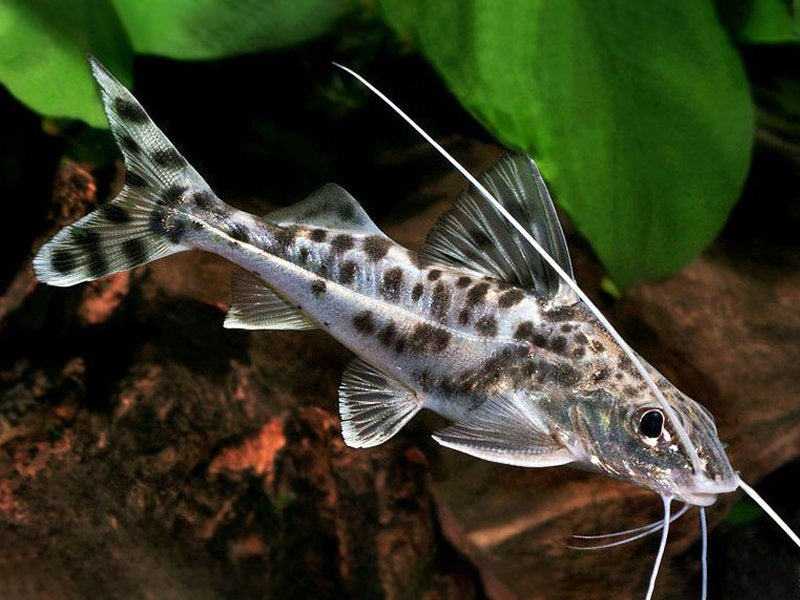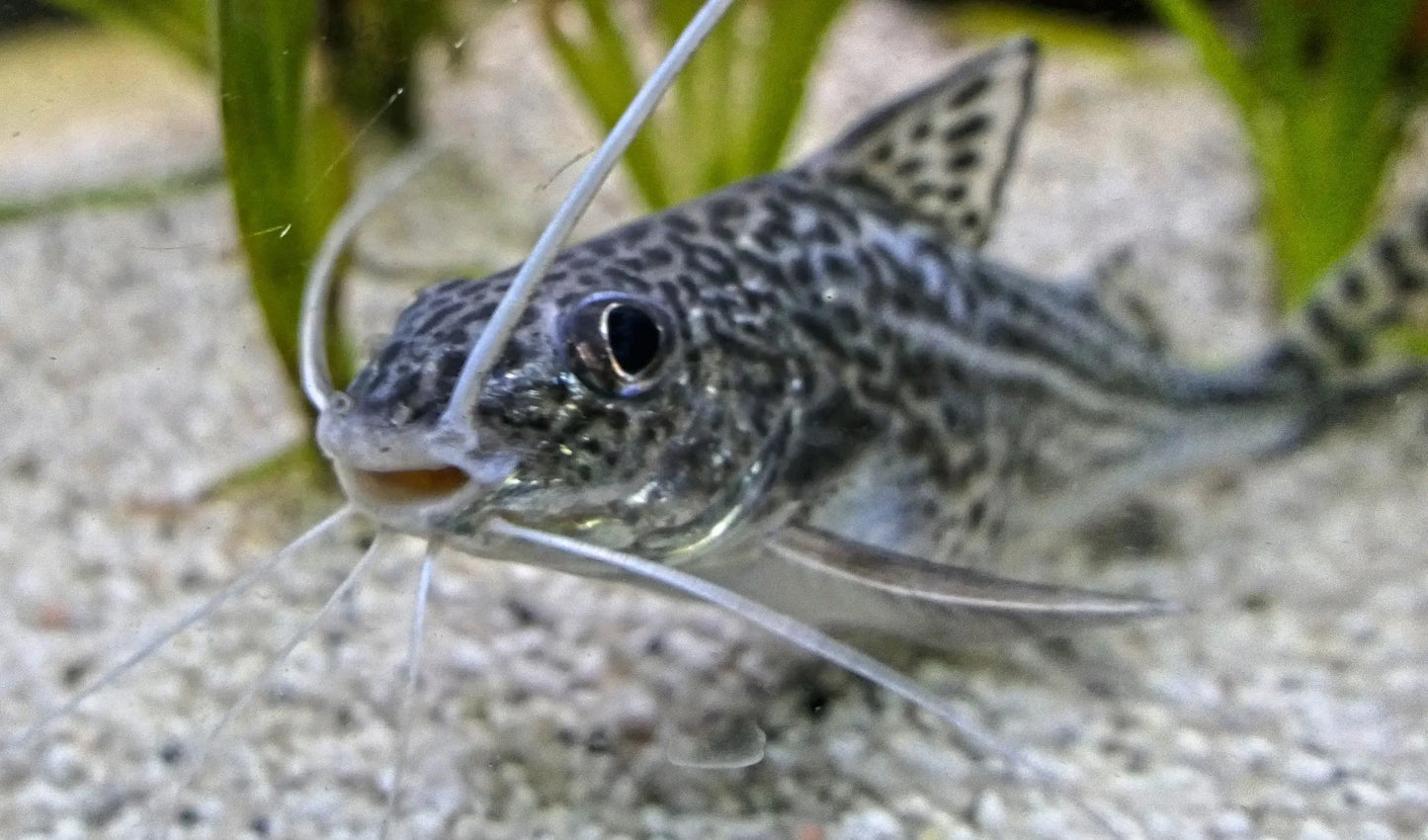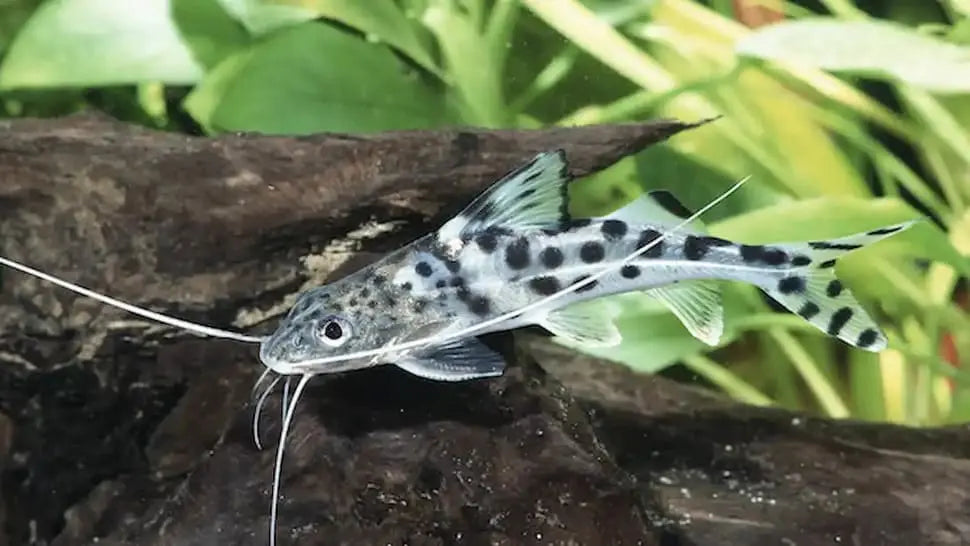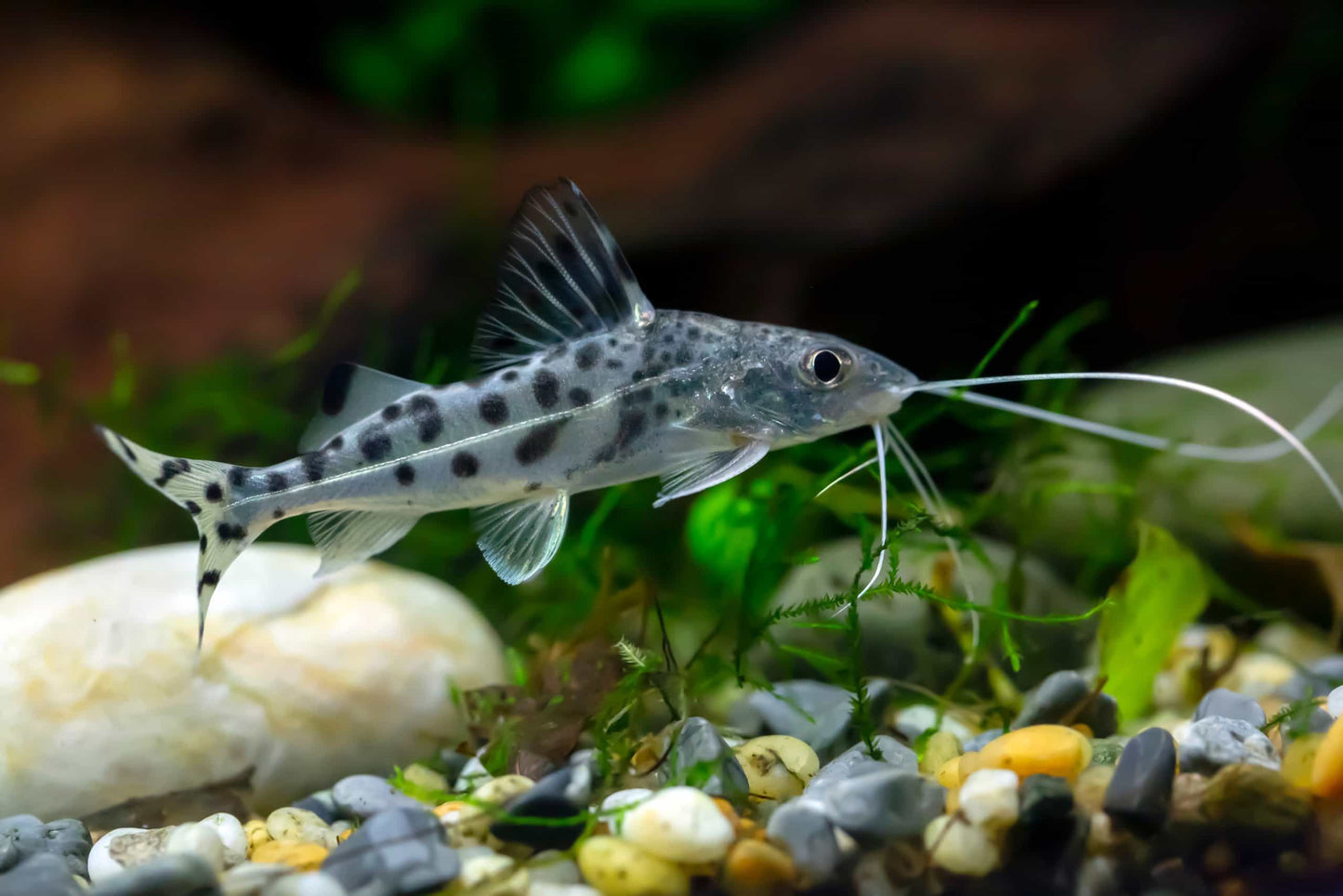Pimelodella Pictus Catfish (Pimelodus pictus) - Live Fish
Pimelodella Pictus Catfish (Pimelodus pictus) - Live Fish
Total items
Product subtotal
Detailed Description
Detailed Description
DESCRIPTION OF ITEM:
The Pimelodella Pictus Catfish, commonly known as the Pictus Catfish, is a popular species in the aquarium hobby, known for its unique appearance, active nature, and peaceful temperament. It's a member of the Pimelodidae family, which includes various species of South American catfish.
Key Characteristics:
-
Size: The Pictus Catfish is a medium-sized catfish that typically grows to about 4-6 inches (10-15 cm) in length in aquariums, though it can occasionally reach up to 8 inches (20 cm) under optimal conditions.
-
Appearance:
- The Pictus Catfish has a sleek, elongated body with a predominantly silvery-white coloration. Its body is adorned with small, dark spots that resemble a “pictorial” pattern, hence the name "Pictus."
- It has long, delicate barbels (whiskers) around its mouth, which it uses for sensing its environment and finding food in murky water.
- The fins are transparent and slightly finned with a darker coloration near the edges.
- The dorsal fin is triangular and located near the middle of the back, while the tail fin is forked.
-
Lifespan: With proper care, the Pictus Catfish can live for around 5-10 years in a well-maintained aquarium.
Behavior and Temperament:
-
Active and Playful: Pictus Catfish are active swimmers, often darting around the aquarium in search of food or exploring their surroundings. They are nocturnal, meaning they are most active during the night and spend the day resting or hiding.
-
Peaceful: They are generally peaceful and do well in community tanks with other species. However, due to their active nature, they can be a bit skittish, especially in smaller tanks or if they feel threatened.
-
Schooling Fish: Pictus Catfish are schooling fish in the wild, and they tend to feel more secure when kept in groups of 3 or more. Keeping them in schools can reduce stress and allow them to display more natural behaviors.
-
Bottom-Dwelling: As bottom dwellers, Pictus Catfish enjoy spending time near the substrate, scavenging for food. They may sometimes share space with other bottom-dwelling species, but they should not be housed with fish that are slow or have long fins, as they might become a target for harassment.
Habitat and Tank Requirements:
-
Origin: The Pictus Catfish is native to the Amazon River Basin and other rivers in South America. They are commonly found in slow-moving waters, with sandy or muddy bottoms, and plenty of hiding spots.
-
Water Parameters:
- Temperature: They prefer warm water, typically between 75-82°F (24-28°C).
- pH: Slightly acidic to neutral water is ideal, ranging from 6.0 to 7.5 pH.
- Hardness: Soft to moderately hard water is recommended.
-
Tank Setup:
- Pictus Catfish need a well-filtered aquarium with plenty of swimming space. Due to their active nature, they require a minimum of 30 gallons for a small group, with larger tanks being preferable as they grow.
- They prefer soft substrate such as sand, as their barbels are sensitive and can be damaged by sharp gravel.
- Hiding spots such as caves, driftwood, or plants can make them feel more secure, especially when they are resting during the day.
Diet:
-
Omnivorous: Pictus Catfish are omnivores, meaning they eat a variety of foods, including:
- Sinking pellets or wafers (particularly those designed for catfish or bottom-dwelling species)
- Live or frozen foods, such as bloodworms, brine shrimp, or daphnia
- Vegetation, such as blanched zucchini, spinach, or peas (though they primarily prefer protein-based foods)
They are opportunistic feeders and will scavenge for leftover food on the substrate.
Special Considerations:
-
Tankmates: Pictus Catfish are best kept with peaceful fish that can tolerate similar water parameters. They do well with other species that are not overly aggressive or small enough to be considered food.
- Compatible tankmates include tetras, rasboras, livebearers, and other peaceful catfish.
- Avoid keeping them with slow-moving or small fish, as the Pictus Catfish might see them as food.
-
Schooling: While they can be kept individually, they do much better in small groups. Keeping at least 3 or more Pictus Catfish together will help them feel more secure and reduce stress.
-
Aquarium Size: Given their active swimming habits, a minimum of 30 gallons is necessary for a small group. However, a larger tank is always better, particularly as they grow.
Conclusion:
The Pimelodella Pictus Catfish is a beautiful and active species that can be a delightful addition to larger community tanks, especially for aquarists who can provide the proper environment and care. Its peaceful temperament and schooling behavior make it a good choice for hobbyists with larger aquariums who are looking for an attractive, fun-to-watch bottom-dweller. Just remember to provide them with plenty of space, hiding spots, and a varied diet to keep them happy and healthy.
Product features
Product features
Materials and care
Materials and care
Merchandising tips
Merchandising tips
Share












